Here’s everything about external hard drives or external SSDs working on USB hubs:
Generally speaking, you can use external drives with USB hubs without any issues, but there are things to consider.
The hub has to provide enough power for the devices you attach to it, and if you are not using Windows, you’ll want to double-check compatibility.
If those hurdles are cleared, it will work fine.
So if you want to learn all about whether an external drive works on a USB hub, then this article is for you.
Keep reading!
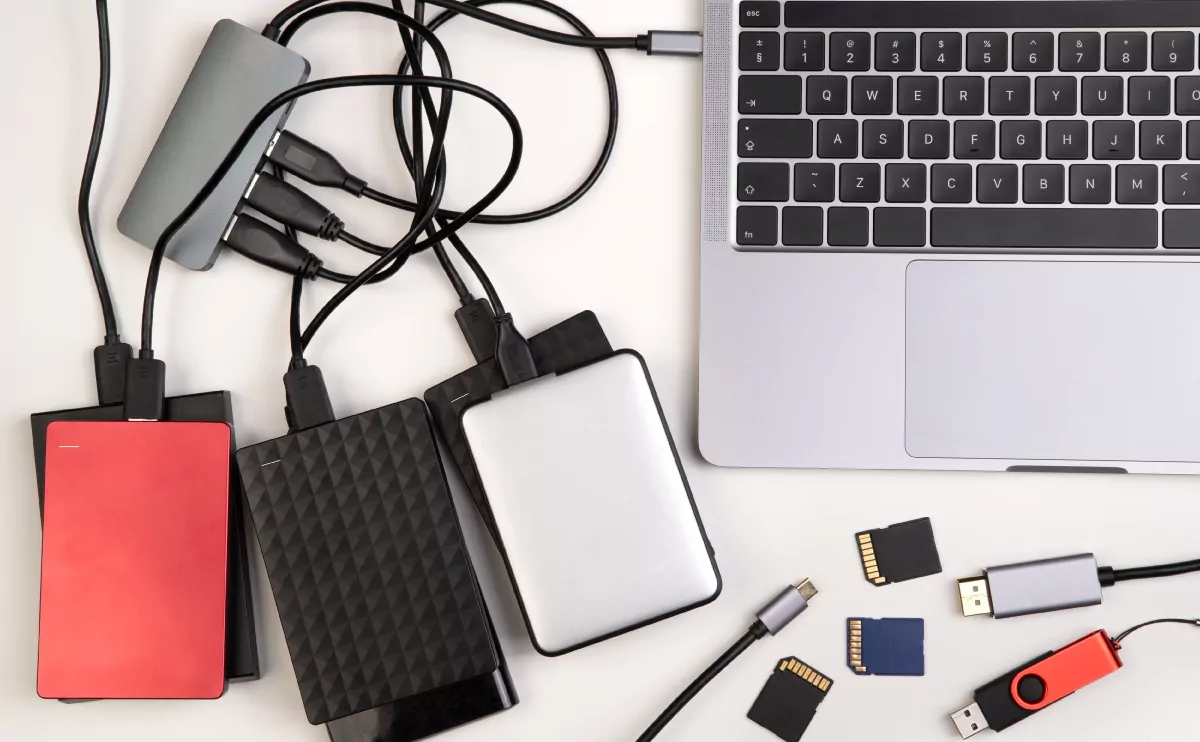
How Do USB Hubs Work With External Drives?
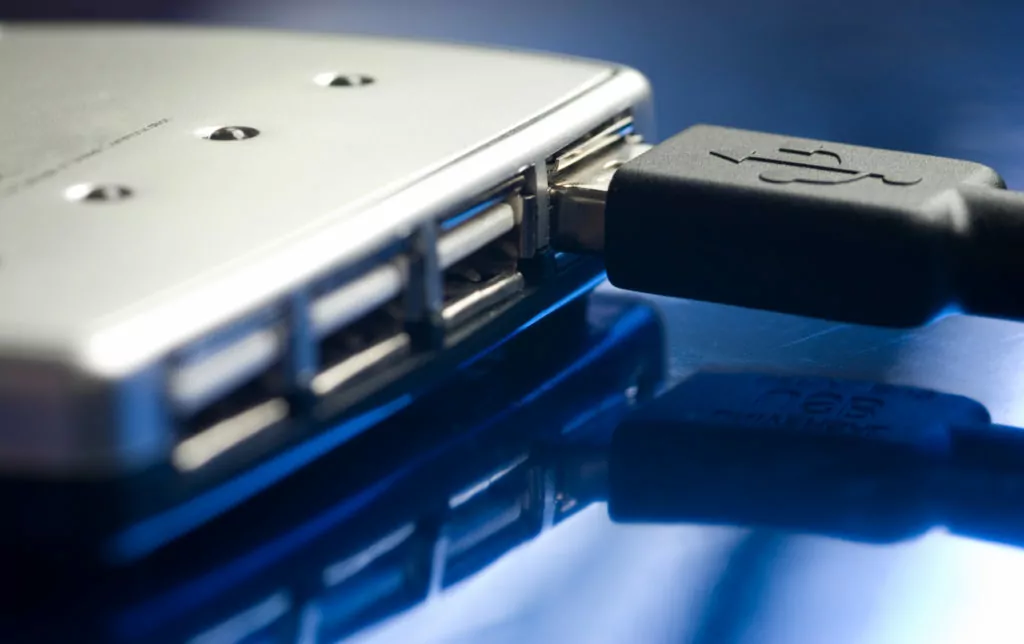
There are a lot of things to think about when plugging external drives into USB hubs.
Are the devices compatible?
Do you have enough power?
We’ll break all of this down in detail.
For starters, let’s get into how the drive communicates through the hub and with the computer.
Typically speaking, this will be via a USB port (you can get crazy with different adapters, but let’s ignore that for the sake of simplicity).
Still, there are a few different USB formats.
On a modern computer, you’re likely to see USB 3 ports, but it’s not uncommon to see USB 2 or USB-C ports as well.
These ports are cross-compatible.
No matter which one a device is intended to use, it can communicate with the other ports.
The exception here is that USB-C uses a different connector, so you need an adapter.
But, the actual digital communication works across these device types.
Additionally, USB hubs are designed for plug-and-play use.
This means that you don’t need special software to make them work.
You should be able to plug in the hub, attach the external drive and have it work right away.
That said, plug-and-play compatibility is usually designed for Windows systems.
If you have a Mac, Chromebook, or other devices (such as a PlayStation 5), your hub might not work with that operating system.
You can double-check the packaging information to be sure.
Here’s how all of this boils down.
If the hub is compatible with your operating system and your external drive is designed for USB use, then it should work fine.
Once again, this is assuming you can physically plug the drive into the hub (using the right adapters to bridge connections between USB-C and the other USB types).
In this sense, you definitely can use your external drive with a USB hub, but there’s the other major issue.
You need to check on power.
How Do You Measure Power Draw in General? (3 Terms)
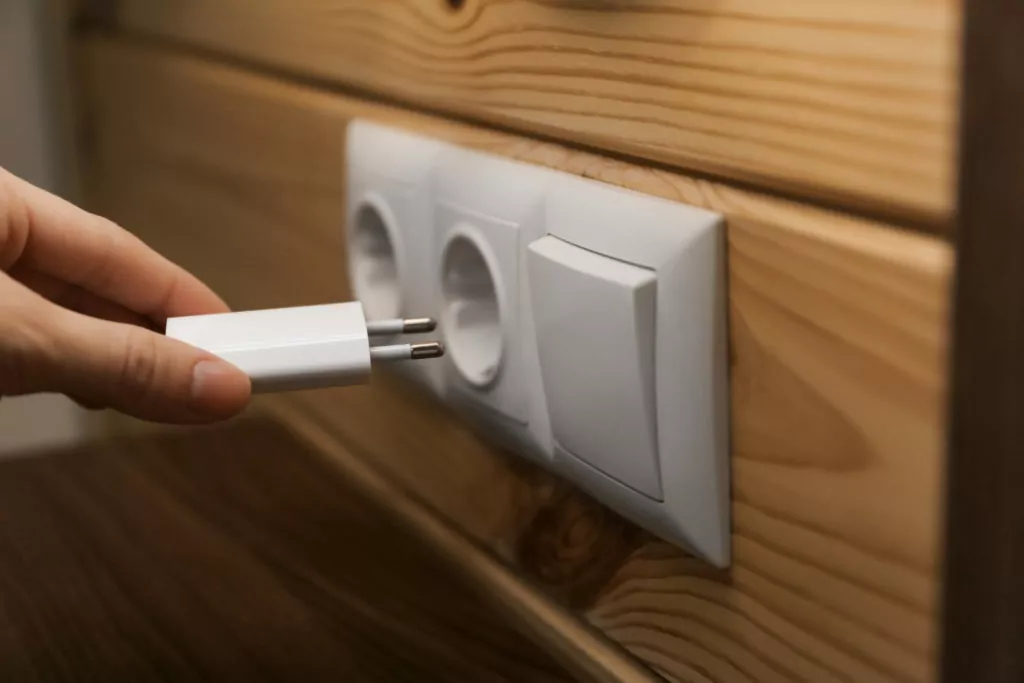
The main issue you’re likely to hit when using external drives on a USB hub is a power draw.
We’ll get into the specifics of all of that a little later.
Before that, it will help to explain what a power draw is, how it works, and how it is measured.
First off, this is a term that explains how much power is used by a device.
So, an external drive will need a certain amount of electricity in order to work.
Whether or not the hub can supply enough electricity is a pretty big deal, and this is why we look at power draw.
It’s worthwhile to emphasize the phrasing.
It’s called “power draw” because the device that you plug into the hub literally draws electricity through the circuit.
So, a hub might be capable of certain maximum power output, but the amount of electricity flowing out of the hub at any given time will be determined by the devices plugged into it.
What matters is how much electricity they pull through the hub.
When you’re looking at hubs, ports, and power requirements, you’ll need to understand a few terms.
Largely, electricity is measured in volts, Amperes (amps for short), and Watts.
These three terms are related, but each has a specific meaning, and it helps to understand the differences.
#1 Volts
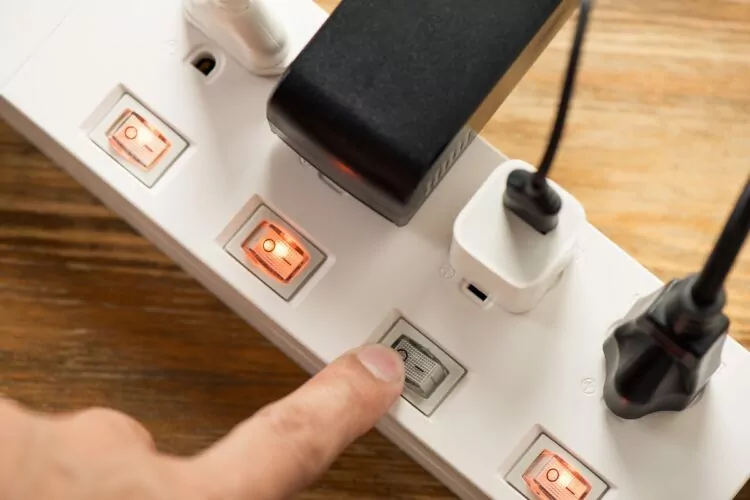
A volt (V) is a measure of electric potential.
That’s a very scientific term to describe how much electric force is in a circuit.
Basically, the voltage is telling you how fast electrons will move through the circuit.
Or, you could think of it as how strongly the electrons are being pulled through the circuit.
Voltage is important for understanding what kinds of work a circuit can do.
If you’re running an electric car, it has to push electrons very hard to move the sheer weight of the vehicle.
Compare that to the voltage powering your computer, and the numbers are much lower.
If we’re just talking about a single external drive, then the voltage you need is a fraction.
Let’s use some numbers to put all of this in context.
An electric car battery will operate at up to 800 volts.
A computer power supply usually operates at around 110 volts.
An external drive is usually running somewhere between 5 and 20 volts.
When we get into electricity numbers for USB ports and hubs, you’ll see why these numbers matter.
#2 Amps
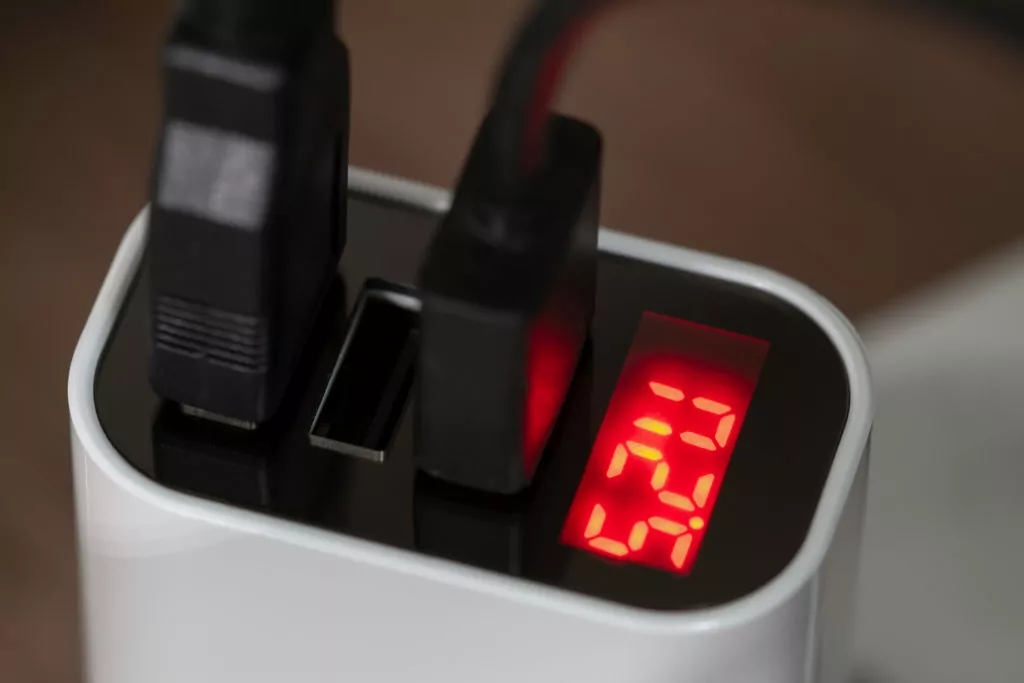
While voltage is telling you how hard the electrons are being pulled, amperage (A) is telling you how many electrons can flow through the current at one time.
You can think of water running through a hose as a nice metaphor.
The Voltage tells you how fast the water flows while the amperage tells you how wide the hose is.
Comparing amps to Volts using the comparisons in the previous section, a larger amperage allows a circuit to do more work.
You need high voltages to push heavy objects, but you also need enough electrons flowing to get the work done.
In that respect, hard-working circuits need high amperage and high voltage.
Comparing cars, computers, and external drives, the amperage you would need for each is around 32 amps, 2 amps, and 500mA (milliamps), respectively.
Again, you can see that the scale of work being done is reflected in the amperage.
#3 Watts

A watt (W) is the measure of power through a circuit.
To put it as simply as possible, a watt is an amp multiplied by a volt.
So, the wattage in the car battery example is 25,600 (800 times 32).
Meanwhile, the wattage for an average external drive is closer to 2.5.
The amount of power needed to run an external drive is a lot less than the power needed to drive a Tesla, and that isn’t surprising.
When you’re looking at hubs and external drives, the easiest way to check for power capacity is to look at wattage.
The devices will draw a certain wattage from the hub, and the hub will have a maximum wattage that it can supply.
But, not all manufacturers make this easy in the labeling and literature.
Sometimes, they’ll post voltage and amperage without wattage, so you’ll have to do a little math on your own.
Why Does Power Draw Matter With USB Hubs and External Drives?
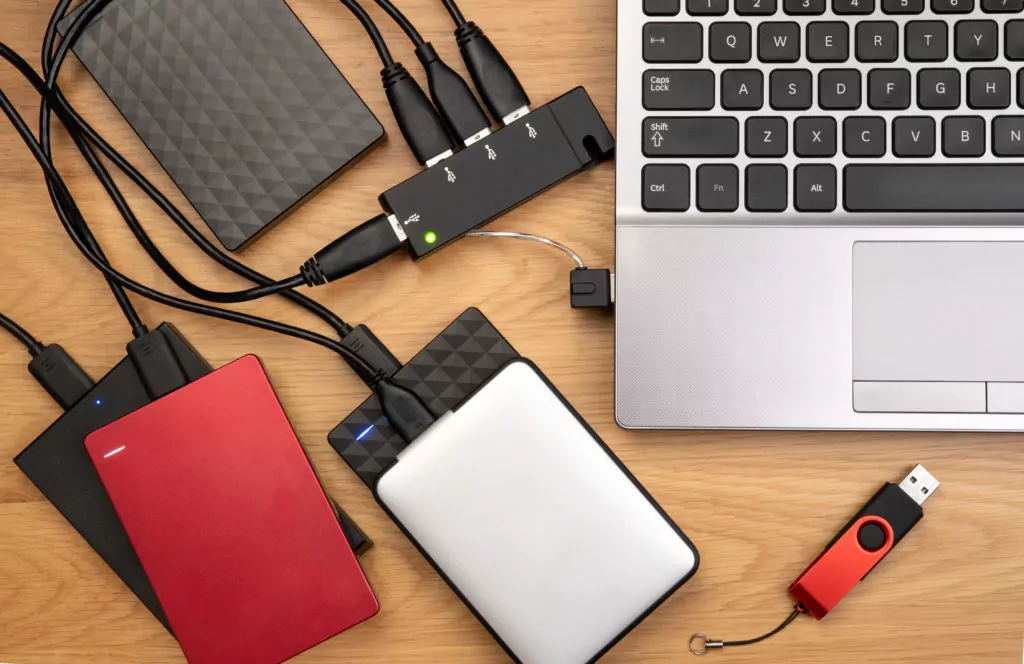
Now that you know how electricity and power measurements work, we can get into the nuts and bolts of the issue.
Basically, you need to be sure that your hub provides enough power for the external drive.
For the most part, we can break USB hubs into two groups.
There are externally-powered hubs and hubs that are not externally powered.
Externally-powered hubs are in the next section.
For a hub that doesn’t have its own power source, it gets all of its electricity through the USB port that connects it to the computer you are using.
This means that the maximum power the entire hub can supply is equal to the maximum power output of that single USB port.
Let’s look at USB port power output before we compare external drive power needs:
- USB 2 provides 500 mA at 5 V, which caps at 2.5 W
- USB 3 provides 900 mA at 5 V, capping at 4.5 W
- USB-C produces up to 240 W (but caps at 100 W on older designs)
We’re halfway there.
Now, we need to look at the power draw on the drives themselves.
Generally speaking, there are two types of external drives:
- Hard disk drives (HDDs)
- Solid-state drives (SSDs)
HDDs need a little more power to operate, even though SDDs are faster and more capable.
On average, external HDDs are going to need around 3 W of power. Conversely, SSDs are going to range from 1 W to 5 W, depending on the design.
So, right away, it’s clear that not all external drives will work with all ports.
The good news is that engineers design these things pretty well.
An external drive that is compatible with USB 2 will be able to operate at 2.5 W or less.
But, a drive designed for USB 3 or USB-C might not work on lesser ports.
More importantly, the hub is splitting power.
So, if you have two 2 W drives, you can’t run them both on a hub that is connected to a USB 2 port.
That same setup would work with a USB 3 port, but you wouldn’t be able to run a third drive.
As for USB-C, it’s providing enough power to run any practical arrangement that you might want.
Here’s the long story short.
Check the power draw on the drives you want to connect and make sure the hub has enough power for all of them.
Hubs With External Power Supplies
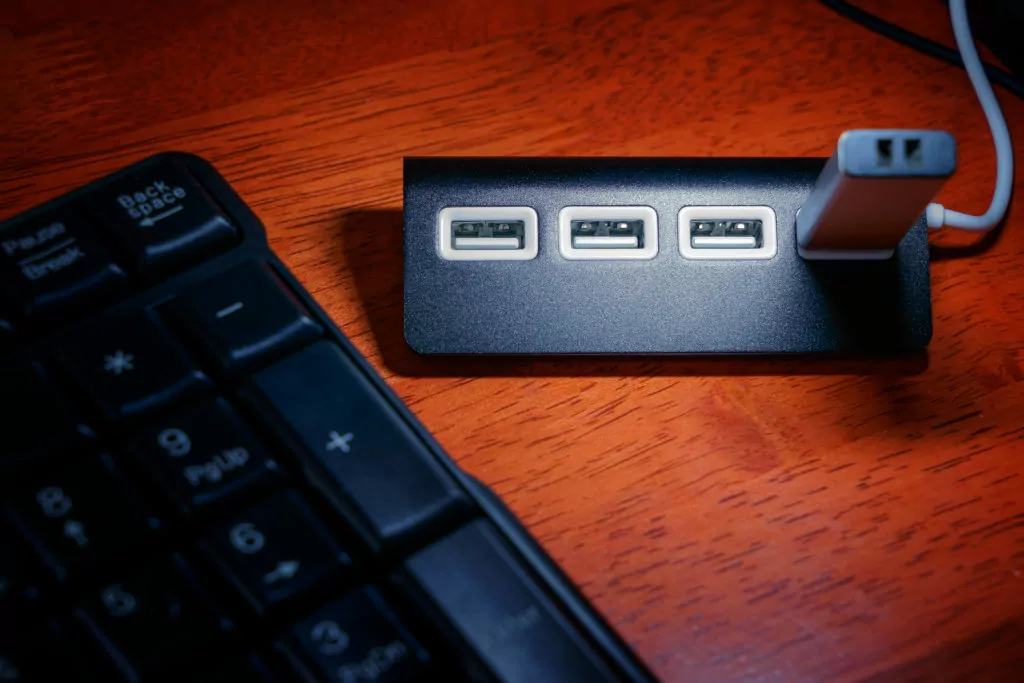
The second type of USB hub makes everything a lot easier.
These hubs have their own power supply that plugs into the wall.
In this case, the hub is providing its own power, so you can trust that it has enough electricity to run a maximum-draw device on every port simultaneously.
You don’t really have to worry about the math.
You just need to be sure that the hub has USB port types that are compatible with your different drives.
A drive designed for use with USB-C might not get enough power from a USB 3 hub, even with that external power supply (this would require adapters, too, making things even more complicated).
Can You Play Games From an External Drive?

You now know that external drives work with USB hubs. But can you play games on them?
Wouldn’t it be convenient to remove all those GBs of games from your internal drive and free up some space?
An external hard drive disc or solid state drive can be used to play games on a PC.
The computer just needs to know where to find the game when it is on another drive.
When you install the game, you can choose where it will be saved and make sure your computer can find it.
Learn all about how to play games from an external drive here.
Does an External Drive Make Games Run Slower or Faster?

Okay, you can play games from an external drive. But how about performance?
Do your games run slower or faster if you run them from an external drive?
Technically, games run slower on an external drive than they do on an internal drive.
Internal drives are typically faster drives with faster connections.
Even so, you might not notice any difference in performance.
Learn all about whether your games run slower or faster on an external drive here.

